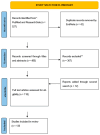Beyond NMDA Receptors: A Narrative Review of Ketamine's Rapid and Multifaceted Mechanisms in Depression Treatment
- PMID: 39769420
- PMCID: PMC11728282
- DOI: 10.3390/ijms252413658
Beyond NMDA Receptors: A Narrative Review of Ketamine's Rapid and Multifaceted Mechanisms in Depression Treatment
Abstract
The rising prevalence of depression, with its associated suicide risk, demands effective fast-acting treatments. Ketamine has emerged as promising, demonstrating rapid antidepressant effects. While early studies show swift mood improvements, its precise mechanisms remain unclear. This article aims to compile and synthesize the literature on ketamine's molecular actions. Ketamine primarily works by antagonizing NMDA receptors, reducing GABAergic inhibition, and increasing glutamate release. This enhanced glutamate activates AMPA receptors, triggering crucial downstream cascades, including BDNF-TrkB and mTOR pathways, promoting synaptic proliferation and regeneration. Moreover, neuroimaging studies have demonstrated alterations in brain networks involved in emotional regulation, including the Default Mode Network (DMN), Central Executive Network (CEN), and Salience Network (SN), which are frequently disrupted in depression. Despite the promising findings, the literature reveals significant inaccuracies and gaps in understanding the full scope of ketamine's therapeutic potential. For instance, ketamine engages with opioid receptors, insinuating a permissive role of the opioid system in amplifying ketamine's antidepressant effects, albeit ketamine does not operate as a direct opioid agonist. Further exploration is requisite to comprehensively ascertain its safety profile, long-term efficacy, and the impact of genetic determinants, such as BDNF polymorphisms, on treatment responsiveness.
Keywords: BDNF; NMDA antagonist; antidepressant; depression; ketamine; mechanism of action; neuroplasticity; opioid system; triple network dysfunction.
Conflict of interest statement
The authors declare no conflicts of interest.
Figures



References
-
- Institute of Health Metrics and Evaluation Global Health Data Exchange (GHDx) [(accessed on 5 October 2024)]. Available online: https://vizhub.healthdata.org/gbd-results/
-
- Ferrari A.J., Norman R.E., Freedman G., Baxter A.J., Pirkis J.E., Harris M.G., Page A., Carnahan E., Degenhardt L., Vos T., et al. The burden attributable to mental and substance use disorders as risk factors for suicide: Findings from the Global Burden of Disease Study 2010. PLoS ONE. 2014;9:e91936. doi: 10.1371/journal.pone.0091936. - DOI - PMC - PubMed
Publication types
MeSH terms
Substances
LinkOut - more resources
Full Text Sources
Medical
Miscellaneous

